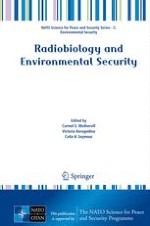2012 | OriginalPaper | Buchkapitel
10. Direct and Reverse Bystander Effect Between Irradiated and Unirradiated Organisms: The Modulating Role of Chemosignalling in Ecology
verfasst von : B. P. Surinov, V. G. Isayeva, A. N. Sharetsky
Erschienen in: Radiobiology and Environmental Security
Verlag: Springer Netherlands
Aktivieren Sie unsere intelligente Suche, um passende Fachinhalte oder Patente zu finden.
Wählen Sie Textabschnitte aus um mit Künstlicher Intelligenz passenden Patente zu finden. powered by
Markieren Sie Textabschnitte, um KI-gestützt weitere passende Inhalte zu finden. powered by
